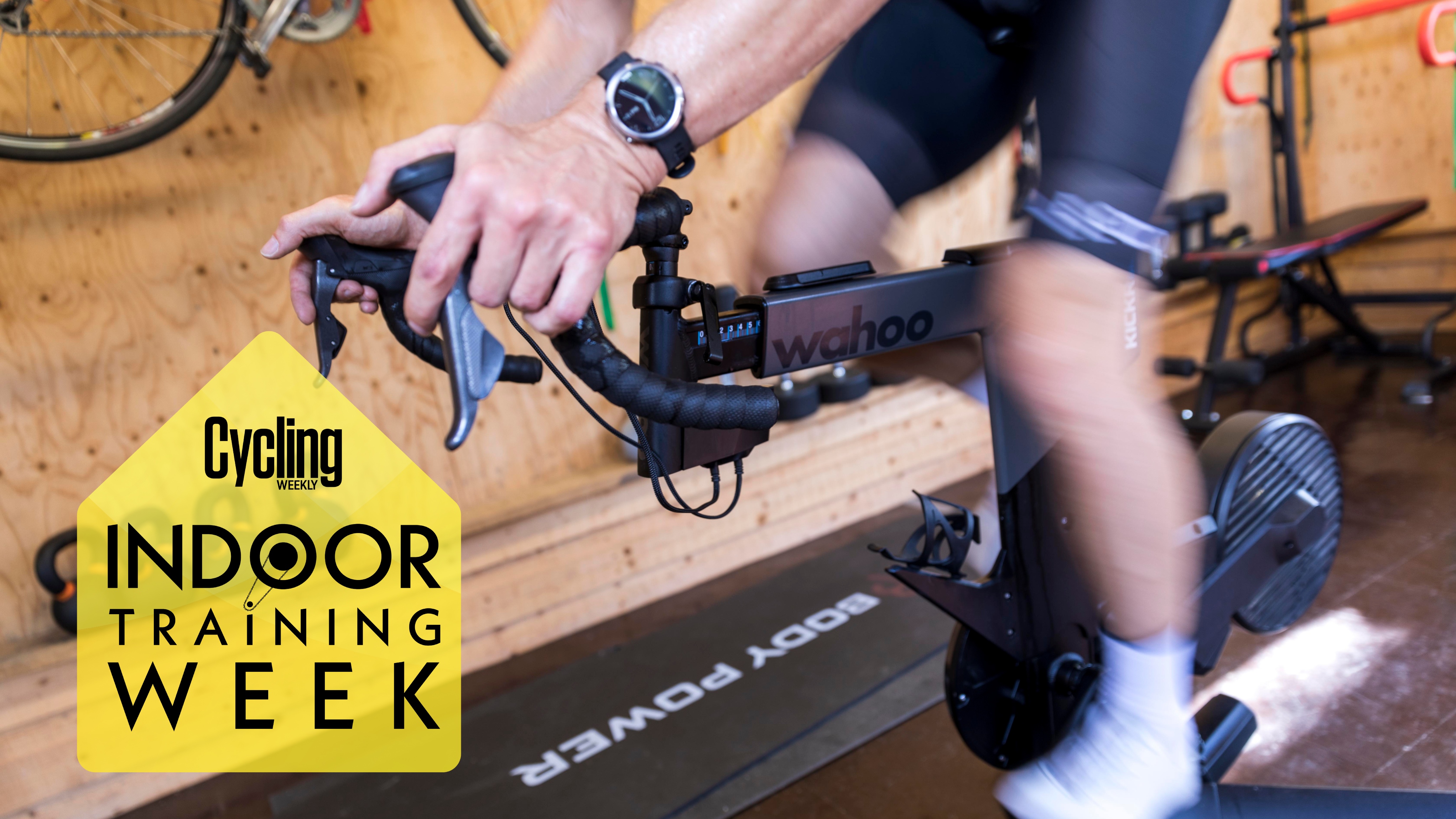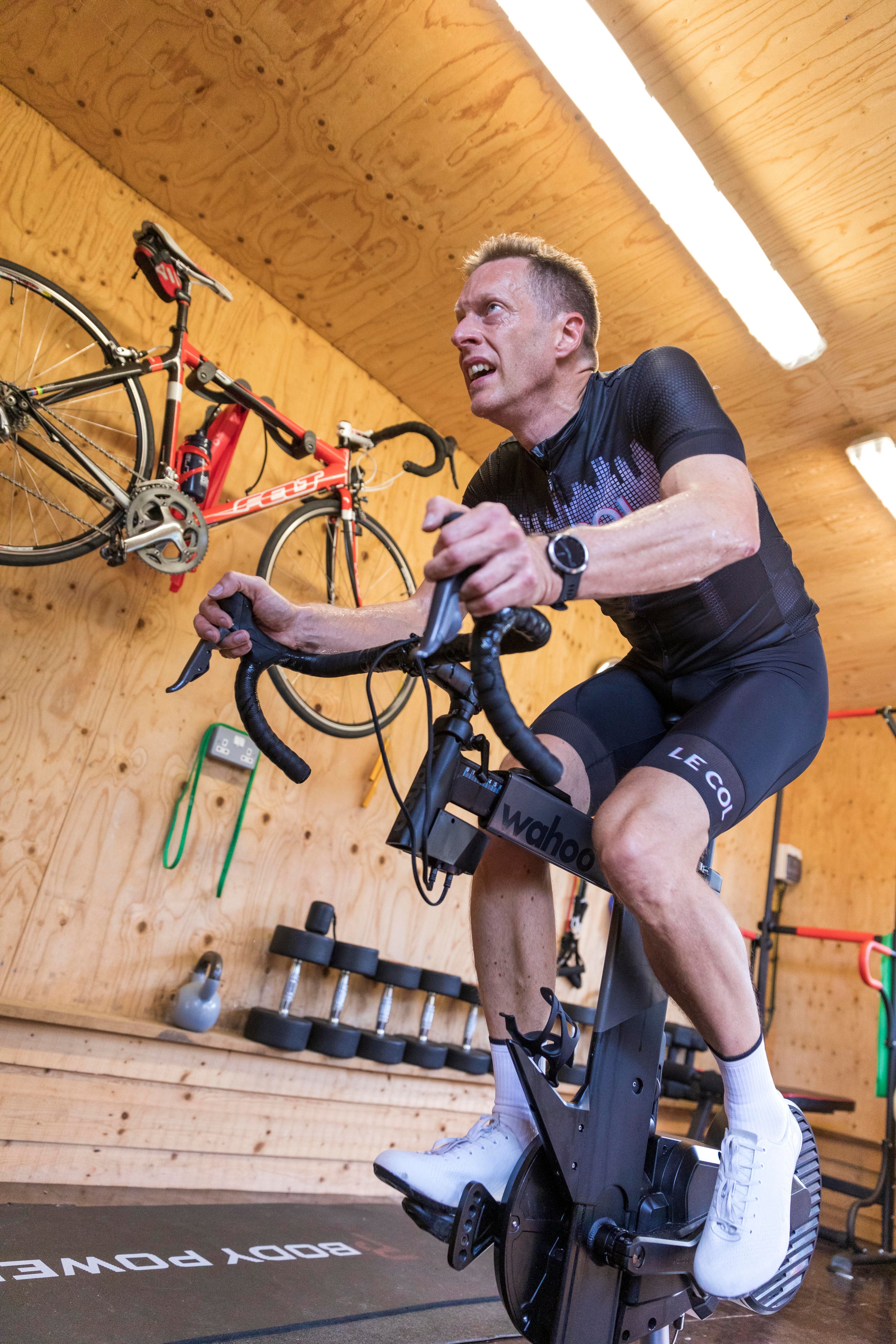
Simulated indoor climbing is a technique as old as indoor training. Way back in the day when telephone books still existed and indoor training technology was in its infancy, we used to stick a couple of copies of the Yellow Pages under the front wheel. Propping up the front wheel shifts the angle of your body and puts it into a position more like the one you engage when climbing, slightly adjusting which muscles are being used and where you sit on the saddle.
Thankfully, indoor training technology has become much more sophisticated and now we have the Wahoo Kickr Climb. The Kickr Climb, which costs £530/$700, raises and lowers your bike to match ascents of up to 20% and descents of -10% when paired with a Kickr Smart Trainer. It can connect with third-party indoor training apps such as Zwift to adjust in real-time to terrain changes, making the virtual course you are riding feel more realistic. But perhaps more importantly, by altering the bike’s position enables a natural shift in your pedalling cadence and engages climbing muscles. The same party tricks is also available via the Wahoo Kickr bike (pictured).
In theory, this technology helps to develop your climbing efficiency and strength in a way that is more transferable to the outdoors, solving the problem of how to train for the mountains if you live in a flat country or indoor train most of your time.
The science behind the claims

Specificity is a keyword in training, and if you want to improve your climbing, your training has to target the components of fitness that influence your performance. Research published by the American College of Sports Medicine and featured in the Journal of Medicine and Science in Sports and Exercise compared training on the flat versus training on an incline when using an indoor cycling training device. The purpose of the study was to determine how dynamic incline – such as the Wahoo Kickr Climb – impacts performance. Cycling performance is often gauged by VO2 max and Maximal Aerobic Power (MAP), but when it comes to uphill cycling, watts per kilogram of body weight (WKG) stands out as the best predictor.
The research addressed the hypothesis that training twice a week with a structured plan will improve Maximal Aerobic Power, but participants who train with dynamic incline will show greater watts per kilogram improvement than those training on the flat. Researchers recruited 22 active adults with access to standardised indoor trainers featuring DI. Participants trained twice weekly for six weeks, with initial and final tests assessing their MAP and climbing abilities. Participants were split into two groups: TILT, who trained on an 8% dynamic incline for 47% of their sessions, and FLAT, who trained on a flat 0% incline. Both groups set power targets based on preliminary graded exercise tests. In line with the predictions, the study found that while both groups improved their Maximal Aerobic Power (TILT = 3.2%, FLAT = 2.3%), only the group using the dynamic incline demonstrated significant improvements in WKG during a simulated climb (2.6% gain).
The conclusion drawn was that regular structured training could improve cycling performance on a 0% incline regardless of training time at different inclines. However, spending significant time training with an incline greater than 7% is necessary to see improvements in simulated climbing tests. Specificity in action – if you want to get better at a simulated climb, train on a simulated climb.
The next research question, of course, is whether it will translate into performance gains outside in the ‘real world’. Hopefully, this is one that Wahoo will address next.
Pros of simulated climbing indoors
- Changes bike position, increasing comfort.
- Strengthens different muscle groups and better prepares you for riding steep hills.
- Improves pedalling technique and efficiency. Helps with proper posture and form during ascents.
- Enhances session realism by simulating real-world climbing and offers real-time adjustment to varying terrains.
Cons of simulated climbing indoors
- Expensive investment as it requires additional equipment.
- Adds complexity to setting up your turbo - especially if you switch between indoor and outdoor on the same bike.
- It takes time to get used to the sensation.
The bottom line
This extra tool makes the indoor cycling experience feel more realistic; you can notice the shift in sensation in your legs as the gradient changes, and the research suggests that this translates into improved climbing performance, at least on indoor simulated climbs.
Outside on the road, I felt stronger on climbs, but it is hard to say if that is the effect of regular training or training with dynamic incline. Using it certainly made indoor training more fun and more varied.
Indoor cycling is becoming ever more sophisticated, the quality of experience and training you can get from your time inside has taken turbo training to a completely new level. It’s no longer a desperate alternative to riding outside when the weather is bad but a legitimate way to cycle all year round, and using the Kickr Climb is certainly a big improvement to wedging the yellow pages under your front wheel.







